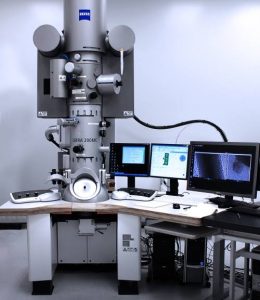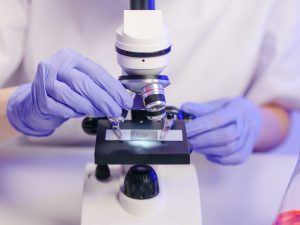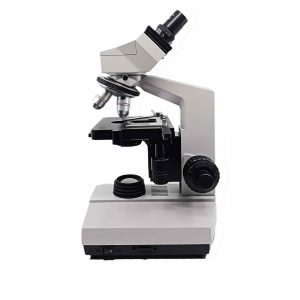Microscopes are essential tools in scientific research, allowing scientists to observe and study objects and organisms that are too small to see with the naked eye. Microscopes differs in their types, features and applications in different areas of science. Hence, in this blog post, we will explore the different types of microscopes, their features, and their applications in scientific research.
Types of Microscopes
There are several types of microscopes used in scientific research, including:
1. Optical Microscope
2. Electron Microscope
Optical Microscopes
A simple compound microscope
Optical microscopes are the most common type of microscope used in scientific research. They use visible light to magnify and view specimens. There are different types of optical microscopes, such as compound microscopes, stereo microscopes, and polarizing microscopes.
Electron Microscopes

Scanning electron microscope
Electron microscopes use beams of electrons to create an image of the specimen. They provide much higher magnification and resolution than optical microscopes, making them ideal for studying the ultrastructure of cells, viruses, and other small organisms.
Features of Microscopes
Microscopes have various features that allow scientists to observe and study specimens more effectively. Some of these features include:
Magnification
Magnification refers to the degree to which the specimen is enlarged. Microscopes have different levels of magnification, which are determined by the lenses used.
Resolution
Resolution refers to the ability to distinguish between two objects that are close together. High-resolution microscopes can distinguish between two objects that are only a few nanometers apart.
Illumination
Microscopes use different types of illumination to view specimens, such as bright field, dark field, and fluorescence illumination.
Applications of Microscopes
Microscopes are used in different areas and different applications in scientific research, including:
1. Biology

Scientists observing a slide under the microscope
Microscopes are widely used in biology to study cells, tissues, and organisms. They allow scientists to observe the structure and function of cells, and to study the interactions between cells and their environment.
2. Medicine
Microscopes are used in medicine to diagnose diseases and to study the effects of drugs on cells and tissues. They are also used to study the structure and function of various organs in the body.
3. Microbiology
Microscopes are very essential in microbiology used to observe, classify, identify and differentiate microorganisms.
4. Materials Science
Microscopes are used in materials science to study the structure and properties of materials at the nanoscale. This includes studying the crystal structure of metals, ceramics, and polymers.
Microscopes are essential tools in scientific research. They play a very important role in science by allowing scientists to observe and study specimens at the microscopic level, providing valuable insights into the structure and function of cells, tissues, and materials.
Would you like to get a microscope or other laboratory equipment for your lab? Purchase from our shop and request for a quote.
Editor’s Recommendations
- Laboratory Equipment Essentials For New Laboratories
- Advancements in Laboratory Equipment: How Stay To Ahead of the Curve
- The Importance of Regular Maintenance for Laboratory Equipment
- The Top 10 Essential Pieces Of Equipment For Modern Laboratory
- How To Safeguard Laboratory Environments: The Role Of Proper Ventilation and Fume Hoods






